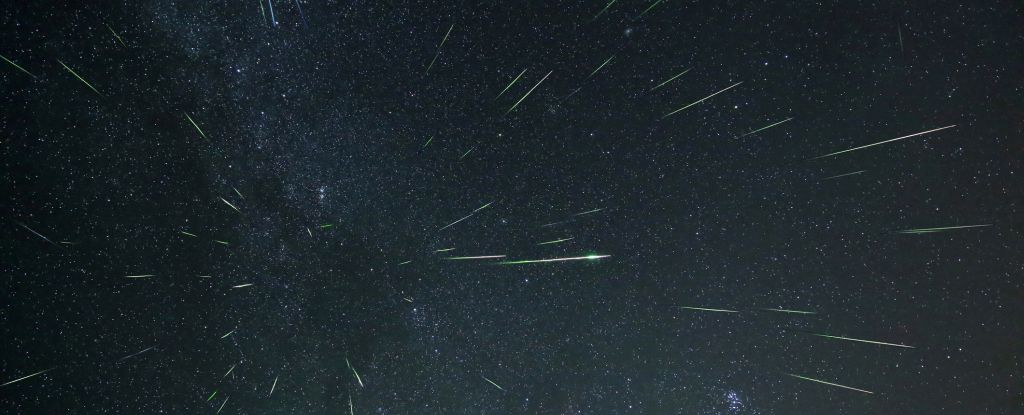The skies of April and May are about to be lit up by two of the year’s most beautiful meteor shower events.
Commencing on April 17, and visible until April 26, the Lyrid meteor shower will fall mostly the northern hemisphere, peaking on April 21 to 22; and, starting on April 20 and finishing up on May 21, with a peak on May 2 to 3, the Eta Aquariids will light up the southern tropics.
Neither meteor shower will require any special equipment. All you need is somewhere comfy, a clear view of the sky, your own two eyes, and the willpower to get out of bed in time to see it.
Earth is frequently dusted by meteor showers; they are some of the best shows in the night sky. They’re the result of our planet passing through the cloud of debris left behind by an asteroid or comet as it travels its own path around the Sun.
Pieces of that leftover comet-or-asteroid detritus smack into Earth’s atmosphere, burning as they fall, creating a glowing trail that can be seen with the naked eye. And, since these trails are left around the Sun on Earth’s orbital path, the meteor showers they create occur annually.
The Lyrids are the product of a comet called C/1861 G1 (Thatcher) that has a roughly 422-year orbit around the Sun; their radiant point, or place in the sky from which they seem to fall, is close to the constellation Lyra, which gives them their name.
This year, the Lyrid peak occurs at the same time as a waning Moon, which will be about 40 percent full, and thus will have an effect on the meteors’ visibility. EarthSky advises that the best time for observing the meteor shower will be on the evening of April 21, before moonrise. Typically, at the shower’s peak, you might see 10 to 15 meteors per hour in a Moon-less sky.
Since Lyra will be high in the northern sky at the time of the shower, not many of the meteors will be visible from the southern hemisphere.
The Eta Aquariids are the debris left by a comet called 1P/Halley, or Halley’s Comet, which comes around every 76 years. Its radiant is close to the constellation of Aquarius, which will present a strong showing for the southern hemisphere, with up to 50 to 60 meteors per hour.
The northern hemisphere might see some meteors, too, although probably significantly fewer – maybe up to 20 meteors per hour.
The best times for viewing these displays are going to vary depending on where in the world you are. You can check the conditions for your location on Time and Date for the Lyrids here and the Eta Aquariids here.
You can also download the International Meteor Organization’s 2025 meteor shower calendar to keep ahead of the rest of the year’s meteor bonanzas. Happy meteor-watching!


